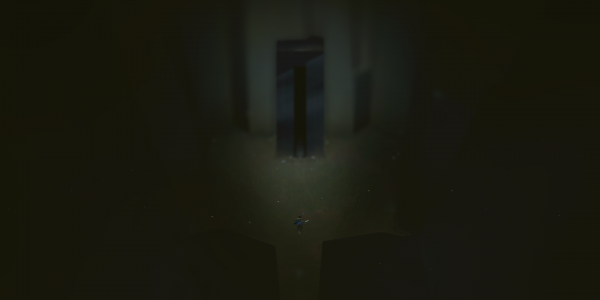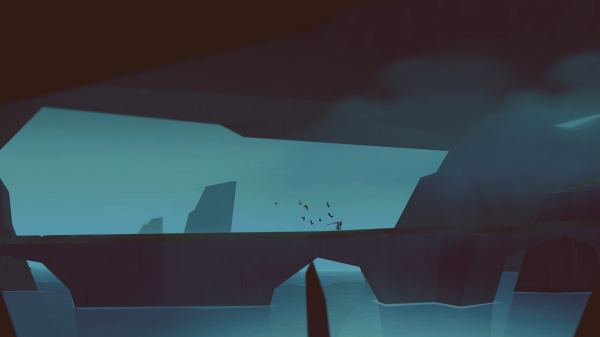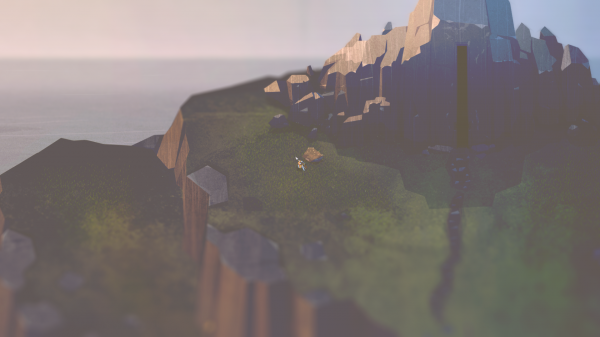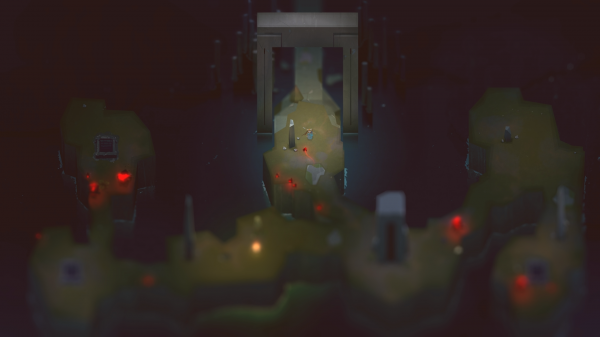Ethan Gach and Greg Galiffa had the following conversation via Gmail. In it, they discuss PAX East’s Indie Megabooth, the culture of spectacle at videogame trade shows, and playing Cabybara Games’s Below.
Ethan: Looking back at the past five months, it’s hard not to be a little underwhelmed by the main, AAA console titles that have been released. Games like the Thief reboot and Wolfenstein sequel have been competent but predictable, while Infamous: Second Son extends the franchise into a new console generation without showing that the series has evolved in any meaningful way since it started back in 2009.
And then there’s Watch Dogs, which feels like the first truly “next-gen” release for consoles, middling about in the low ’80s on Metacritic as a high production hybrid of Grand Theft Auto and Assassin’s Creed. A game that critic Justin Clark called “muddled” and less ambitious than what was sold to consumers back when it was announced, Watch Dogs is similar to the games industry what movies like “Transformers 4” are to Hollywood: a paint by numbers approach to what’s financially viable but rarely creatively stunning or emotionally satisfying.
But like the movie business, video games also have a flourishing, independent underbelly which games like Below exemplify. If E3 is the San Diego Comic Con of games, then, at least for now, PAX conventions are its Sundance Film Festival. And while industry behemoths like Ubisoft and 2K Games can still appear to be the dominating force that them, independent titles offer the most opportunity for genuine surprise.
Developer Capybara Games’s Below is unassuming and utterly charming. Unlike a lot of the polished rubbish around it, playing Below felt more like sharing an experience with its creators than smashing buttons on the inside of a skinnier box. It doesn’t revel in distracting spectacle like a lot of modern AAA games, which I think is part of the reason you and I liked it so much, Greg.
Greg: Spectacle didn’t grab us at PAX East 2014. As a Turtle Rock Studios fan, I’m interested in “Evolve,” but wasn’t at all enticed by the Rancor-sized monster on display at their booth. And now we’re on the cusp of E3, arguably the most spectacular video game show out there. We should be clear: this type of marketing strategy isn’t a bad thing. We are talking video games after all. We need mech replicas, space marine mannequins and hulking, plastic beasties to grab our attention and provide a sense of tangibility. There’s so much noise at these shows. So many lights. Our tiny brains can only handle so much. Which is probably why I spent three blissful days acquainting myself with the Indie Mega Booth at PAX East. This growing alcove is a world all its own. I like your comparison to Sundance because that’s how the environment felt: a microcosm of developers and mindful fans, all coalescing around quirky, energetic, refreshing ideas. And this year’s darling was definitely Below.
The first thing that struck me was the game’s atmosphere, which is zoomed out and quiet, almost like looking down at a city from a skyscraper. The scale reminded me of Shadow of the Colossus. There’s something haunting and serene in it. The tiny protagonist is barely distinguishable. He or she has a sword, a shield and a cloak. I don’t recall hearing music other than some echoes and a few environmental sound effects. I do remember feeling overwhelmed by the demo’s open-ended platform. If other people weren’t waiting, I’d have played for hours. But such is the way with the Indie Mega Booth. Unlike the assembly-line feeling of AAA demos, the indie environment is more intimate. Fans and con-goers can simply walk up to developers, hear them all jazzed-up about his or her newest project. You want to see some of the purist joy this industry has to offer? Ask a first-time indie developer what it’s like to have a booth. Peace, love and happiness. Like, all of that, man. What about you? What was your experience with the game? From the few glances I shot over to your screen, it looked like you were doing something completely different than what I did.
Ethan: Below combines quick accessibility with sprawling exploration possibilities. From the beach where I think we both started, paths start forking immediately, with no clear indication that any particular route is preferable to another. In fact, I’m not sure that the game ever presented any objectives, even loosely, during my time with it.
With a narrative even more sparse than something like the Dark Souls series, Below relies heavily on its intriguing presentation to coax the player into traveling deeper into its world. The game also cuts against the grain of other recent AAA trends in how narrowly and deliberately objects are placed in its environments. Whereas games like Bioshock Infinite and Borderlands 2 make a fetish out of burying the player in collectibles, consumables, and other in-game junk, I encountered a limited number of enemies and dropped items during my time with it.
The game has also gotten a lot of pre-release praise for not being “hand-holdy” either, a current mainstream gaming affliction in which game mechanics and systems are watered-down and over-explained until they are no longer able to provide a distinct or challenging experience. Below has a concept, it sticks to it, and has enough confidence in it to let it dig its hooks into the player’s imagination slowly over time. This runs in stark contrast to much of the rest of the video game industry, saturated as it is with bombastic hype and vague, buzzword-laden promises. Rather than relying on “the six pillars of design” or some other market-tested formula, Below and other games we saw at PAX East (Hyper Light Drifter, for instance) are working off of a riskier and more intimate road map.
Greg: Don’t speak too soon; late game additions are common. Your inventory might end up full of extraneous potions and/or discarded expository notes. In the iteration we played though, collectibles were limited and inconspicuous. I remember discovering a bow and arrow toward the end. The item was waiting on a beach inside of a marooned ship. Nothing prompted me to investigate area other than not knowing the ship’s contents. This is what I love in video games: little instruction, lots of opportunity. Even Below’s official site is barren. Scroll past the glowing images and dubious eyes and you’ll find only three descriptive words: Explore. Survive. Discover.
Yes, please.





















